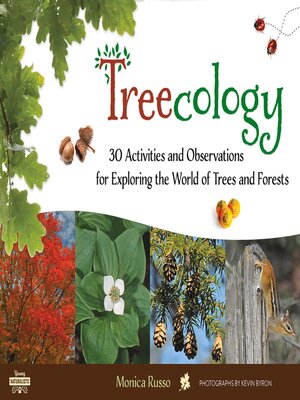Treecology
ebook ∣ 30 Activities and Observations for Exploring the World of Trees and Forests · Young Naturalists
By Monica Russo

Sign up to save your library
With an OverDrive account, you can save your favorite libraries for at-a-glance information about availability. Find out more about OverDrive accounts.
Find this title in Libby, the library reading app by OverDrive.



Search for a digital library with this title
Title found at these libraries:
| Library Name | Distance |
|---|---|
| Loading... |
National Outdoor Book Award Honorable Mention in the Children's category 2017 Outstanding Science Trade Books for Students K-12 (National Science Teachers Association - Children's Book Council) Finalist for the 2017 AAAS / Subaru SB&F Excellence in Science Book exemplify outstanding and engaging science writing and illustration for young readers Did you know . . .Trees have many talents—they can feed and house animals, create windbreaks, protect watersheds, and help prevent soil erosion. Researchers believe they have found the oldest tree in the world—a spruce in Sweden that has been alive for about 9,500 years. Even dead and decaying trees and stumps are often teeming with life! Young nature enthusiasts will learn these and many other fascinating facts about the wonderful world of trees in Treecology. This fun and interactive resource includes plentiful full-color photos and drawings and clear, kid-friendly discussions of tree structures, families, and foods; the interaction between trees and the wildlife that depend on them; tree and forest–related jobs and preservation, and much more. With encouragement to "Try This," "Look For," and "Listen For," kids participate in 30 hands-on activities that promote observation and analysis, writing and drawing, math and science, and nature literacy skills. They will measure the circumference of a tree trunk, press and preserve leaves, study the textures of tree bark, find evidence of forest creatures, record their findings in a decorated forest logbook, and more. Readers from any region will start to take notice of the trees around them—not just in forests and woods but also around the schools, parks, buildings, and sidewalks of their town, and in their own backyards. Useful resources include a glossary of "tree terms," common and scientific names, a list of tree and nature organizations and groups, and a teacher's guide to initiate classroom discussion and investigation.







